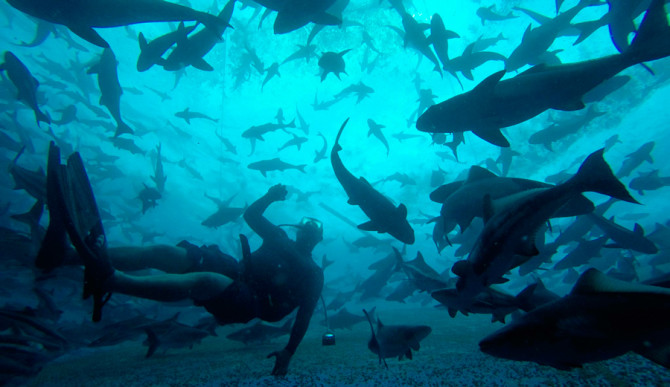Editor’s Note: Surfer’s Digest will be a weekly series that gets you squared away with significant non-surf-specific news that directly or indirectly affects the waterways we love.
From gaseous chambers to ocean-minded conservation, you’re better to know about it.
Whale Watch: Canadians Wait (Politely) for Willy to Explode
Yep, Willy’s beached and getting bloated. One of two beached whales in Newfoundland, the local municipalities are doing their darnedest to figure out how to deal with their ever-growing problems.

Poor sack of blubber. Photo: Huffington Post
It’s fascinating, really. But first, let’s clarify that beached whales in and of themselves are not what we find fascinating — we find them rather sad. And if there is ever a way to avoid this rotting scenario, whether preventative or otherwise (like safely returning a still-living whale to sea), needless to say, do it.
But dude being dead and all, let’s take a quick crash course in biology: as bacterias decompose the body, they generate lots and lots gas — methane, ammonia, and hydrogen sulfide to be specific — that expand the carcass and, quite frankly, smell really bad. Think “whale-sized fart/cat pee/egg bomb.” Anyway, that’s why our friend here is all bloated. So bloated, in fact, that they’re worried the poor sack of blubber and other gross organs and intestines is going to explode. With that in mind, you understand why this situation needs some serious Gas-X. ‘Cause whatever our fetishes, we don’t want to have ourselves a repeat of what happened last November. We’re still washing off the stink.
Let’s hope this form of whale watching doesn’t become a thing.
Deep Sea Dumpsters: Trashing The Abyss
Still patting ourselves on the back for cleaning up literal tons of visible garbage from off the beach, we seem to be ignoring a major problem in the way of litter we’re unable to see — such as the mass amounts of trash on our oceans’ floors.
For the past 12 years, European scientists have conducting research where they map the ocean floor, a project that happens to also have them cataloging the trash they found over the course of their studies. As it turns out, there’s more than a little of it, in places as far as 1,200 miles from the nearest human settlement. At shallower depths, ones that were closer to land, the team found that there was an average of 20 pieces of litter per hectare. Deeper parts? As much as 2 pieces of litter per hectare.

This is not your personal trash can. Photo: Motherboard
There seemed to be a pervasive thinking that all plastic trash thrown into the ocean offshore ends up on one of our coastlines. Stop being an idiot. That is not true. Don’t continue being the jackass who thinks it is.
Fish Food: Sustainable Farming By Sea
Great story in National Geographic on “The Other Other White Meat” and the conscious means by which they’re being farmed, proving that innovation doesn’t always mean smaller and faster.
“Even in the air, O’Hanlon knows the way by heart to a farm that he built from nothing, out in the middle of nowhere. Eight miles off the coast of Panama on the Caribbean side (most people visit the Pacific coast) we start to see net domes peeking out of the water. They’re like icebergs—most of their mass is underwater. Inside the domes are some 600,000 fish living out their days in the warm Caribbean, eating real food, drinking real water, and nudged by real currents. O’Hanlon is next to me, pointing down and grinning. Later that day he will tell me three times that unlike conventional aquaculture farms where fish swim in their own you-know-what, his fish never see the same water twice.” – Daniel Stone

A farmer and his land. Photo: National Geographic


